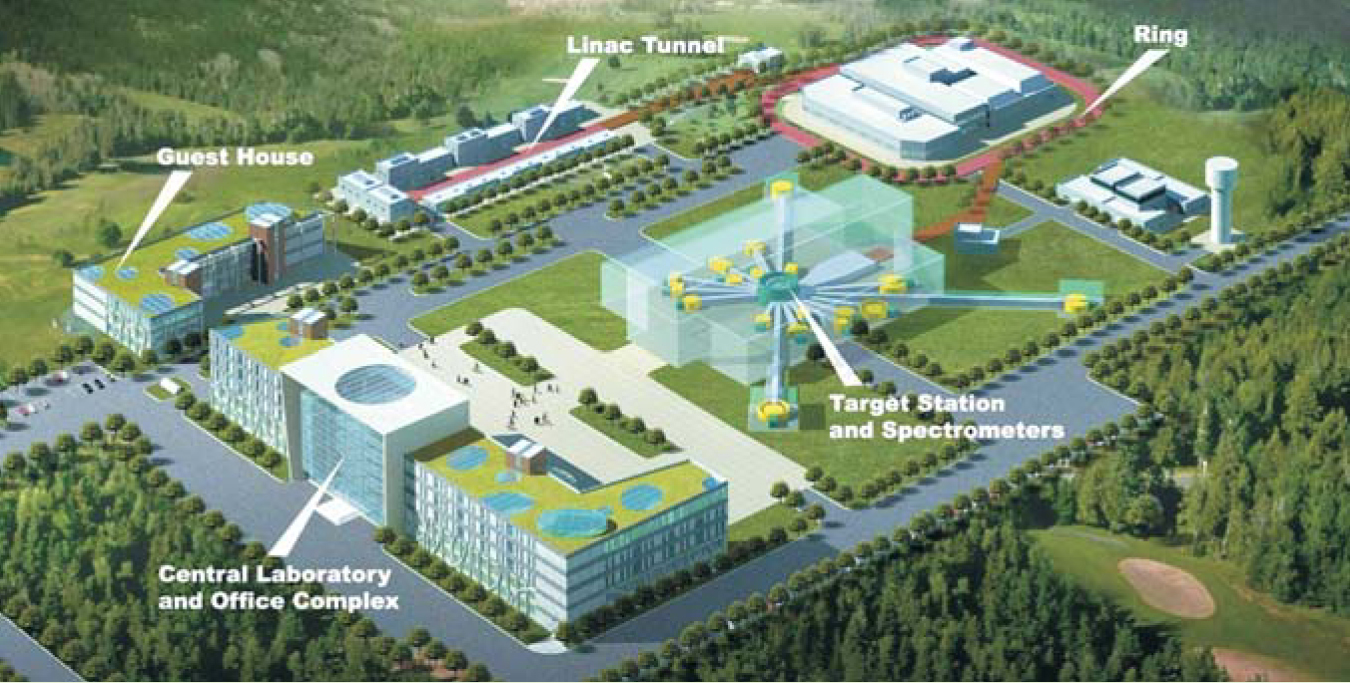China selects southern site for neutron source
DOI: 10.1063/1.2754596
“The government is pushing us to speed up and do this as fast as possible, and local leadership is very supportive. That is one reason I like doing the project,” says Jie Wei, manager for the R&D and construction phases of the China Spallation Neutron Source.
R&D has begun, says Wei, who came to the CSNS from a long career as an accelerator physicist at Brookhaven National Laboratory, where he still spends half his time. The CSNS “is politically in principle already approved,” but a feasibility study, environmental assessment, and other paperwork are still pending. Construction will start next year, he says, and the CSNS is slated to go on line in 2013.
The neutron source will start off with an average power of 120 kW—comparable to today’s world leader, ISIS in the UK—and is being designed for a future upgrade to 500 kW. Thom Mason, director of the Spallation Neutron Source at Oak Ridge National Laboratory, which is ramping up to 1.4 MW, says, “Additional power is valuable in terms of performance, but there are a lot of measurements where the breakthrough is not in the neutron scattering [intensity] but in the discovery of a new material. The CSNS will have a lower neutron intensity [than the SNS and a 1 MW spallation neutron source under construction in Japan], but it can still be very productive.”
“It’s not like a discovery machine. If one has a collider with a big luminosity, building a smaller one makes no sense. This is quite different. It’s a user facility,” adds Wei, who as Brookhaven team leader was in charge of designing and building the SNs’s proton ring and transport lines; spallation sources produce neutrons through collisions between protons and heavy nuclei. The CSNS will be used for studies in physics, materials science, chemistry, biology, and medicine, and by industry, he says. As a pulsed neutron source, “it can give you time structure—we can study dynamics.”
Initially, the plan was for the CSNS to be built in Beijing. But land is scarce and expensive, the city is busy preparing for the Olympic games, and the area already hosts several large scientific facilities. Instead, the CSNS will be built in Dongguan, in Guangdong Province. By piggybacking on the thriving electronics manufacturing business in nearby Hong Kong, the area has become one of the wealthiest in China. “It’s economically booming, but it’s business oriented, and there are no major scientific projects there,” says Wei. “The southern provinces would very much like to change their image to also become a science and technology center. And CAS”—the Chinese Academy of Sciences, whose Institute of High Energy Physics and Institute of Physics are collaborating on the CSNS—“would also like to have science become more balanced over the whole country.” Guangdong is providing land and about $60 million for infrastructure, personnel, and the facility—on top of $150 million for the CSNS from the central government.
“It’s a good idea to build [the CSNS] in Guangdong,” says Wei. He notes that there are universities in the surrounding area, including in Hong Kong, and two airports within 50 km; the flight to Beijing is 2.5 hours. “There is not a huge scientific user community in China,” says Mason. “They’ll have to grow that. The demand will get higher, and that is presumably when they’ll want to upgrade.”
A power of 120 kW was chosen, Wei says, “because $150 million is as much as we can get from the central government for construction.” And, he adds, “if we compare the scope of the CSNS to the SNS, our budget is about one-sixth of the US budget.” Such comparisons are tricky, however, because of differing accounting methods, says Mason. “You’re almost better off counting fulltime equivalents and tons of steel.” In any case, meeting the budget will be tough, Wei says. “We have to do two things: Keep fabrication in China as much as possible, and collaborate with world leaders in the field, so we can make mutually beneficial trades.” One challenge, he adds, is that the “CSNS is China’s first proton machine.”
Expect more firsts, says Mason. “The Chinese have laid out a fairly ambitious plan for scientific facilities. The summary is, they are going to build one of everything!” (See the article in Physics Today, December 2006, page 38

China’s list of planned scientific facilities include a spallation neutron source, which is scheduled to start up in 2013.
(Artist’s conception courtesy of the CSNS project, Chinese Academy of Sciences.)

More about the Authors
Toni Feder. American Center for Physics, One Physics Ellipse, College Park, Maryland 20740-3842, US . tfeder@aip.org





